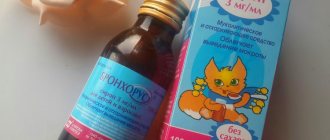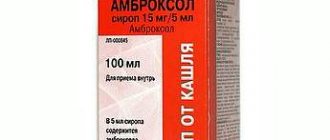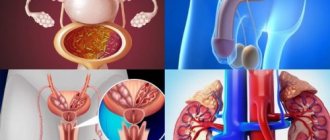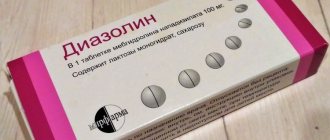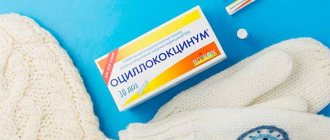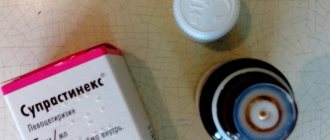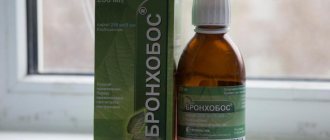Coughing in children is a very unpleasant phenomenon. Many children under a certain age simply do not have the reflex to expel mucus from the bronchi. In this case, medications come to their aid, one of which is Ambrovix (syrup for children). Instructions for using the medicine will be presented to your attention in the article. You can also read reviews about this medication.
What does the drug contain?
About the drug "Ambrovix" for children, the instructions state that the drug has an expectorant effect. The composition also dilutes mucus and facilitates its easy separation from the bronchial walls.
The active ingredient of the drug is ambroxol. For every 5 milliliters of medication there are 15 or 30 milligrams of this component. The suspension also contains additional substances (propylene glycol, sorbitol solution, alcohol, flavorings, water, and so on).
Ambroxol-Hemofarm (syrup)
Pharmacodynamics
Ambroxol is an expectorant, mucolytic agent. Ambroxol stimulates the work of serous cells of the bronchial glands, increases the content of mucous secretion in the respiratory tract. Enhances the formation of pulmonary surfactant and stimulates ciliary activity. These effects lead to increased mucus flow and transport (mucociliary clearance). Increasing mucociliary clearance improves sputum discharge and alleviates nonproductive cough. In patients with chronic obstructive pulmonary disease, long-term therapy with ambroxol (for at least 2 months) led to a significant reduction in the number of exacerbations. There was a significant decrease in the duration of exacerbations and the number of days of antibiotic therapy.
Pharmacokinetics
All dosage forms of immediate release ambroxol are characterized by rapid and almost complete absorption with a linear dose dependence in the therapeutic concentration range. The maximum concentration in plasma (Cmax) after oral administration is achieved after 1 - 2.5 hours. The distribution volume is 552 l. In the therapeutic concentration range, binding to plasma proteins is approximately 90%.
The transition of ambroxol from the blood to tissues when administered orally occurs quickly. The highest concentrations of the active component of the drug are observed in the lungs.
Approximately 30% of an oral dose is subject to first pass effects through the liver. Studies on human liver microsomes have shown that CYP3A4 is the predominant isoform responsible for the metabolism of ambroxol to dibromoantranilic acid. The remainder of ambroxol is metabolized in the liver, mainly by glucuronidation and by partial degradation to dibromoantranilic acid (approximately 10% of the administered dose), as well as a small number of additional metabolites. The terminal half-life of ambroxol is 10 hours.
The total clearance is within 660 ml/min, renal clearance accounts for approximately 8% of the total clearance. Using the radioactive tracer method, it was calculated that after taking a single dose of the drug, about 83% of the dose taken is excreted in the urine over the next 5 days.
No clinically significant effect of age and gender on the pharmacokinetics of ambroxol was found, so there is no basis for selecting the dosage based on these characteristics.
Indications and mode of action of the drug
When do doctors prescribe Ambrovix for children? The instructions for use indicate that the composition must be used for difficult to separate sputum and a prolonged cough. The drug is indicated for diseases of the lower respiratory tract.
The medication acts directly on the mucus, which normally forms on the walls of the bronchi and lungs. During illness, this sputum becomes especially voluminous and viscous. The described remedy dilutes this secretion and helps increase its volume. As a result, a person is provoked to cough, during which the accumulated mucus is coughed up.
Interaction with other drugs
The simultaneous use of the drug with drugs that have antitussive activity (for example, containing codeine) is not recommended due to the difficulty of removing mucus from the bronchi while reducing cough. The simultaneous use of ambroxol with antibiotics (amoxicillin, cefuroxime, erythromycin, doxycycline and others) improves the flow of antibiotics into the pulmonary tract, which can shorten treatment time.
Ambro solution for injection is incompatible in the same syringe or dropper with other medications whose pH value exceeds 6.3, as it has acidic properties.
Prohibition of use and adverse reactions
What else can the instructions tell the consumer about the composition of Ambrovix (for children)? The abstract says that the described medicine can also be used by adult patients. This is not a contraindication. However, each medication, including the one described, has its limitations.
The instructions for use do not allow the use of the medicine in children with hypersensitivity to the components of the syrup. Children under 2 years of age should not be given the described remedy, unless this prescription has been made by a qualified specialist. The drug should not be prescribed to children with fructose intolerance.
In most situations, the described medicine is well tolerated. However, the manufacturer does not exclude the possibility of an adverse reaction. These include: allergies, bronchospasm, nausea and abdominal pain, dry mouth, fever. If you encounter such manifestations, then you should visit your doctor as soon as possible.
Are there possible side effects?
The best tolerability of the drug is observed at a young age. The likelihood of developing side effects when using Ambrobene solution is determined by the method of administration of the drug. Oral administration of the drug is often accompanied by disruption of the digestive system and is manifested by nausea, vomiting, stool problems, and pain in the stomach. The severity of negative symptoms can be reduced by strictly following the recommended dosages, and you should also remember that the drug taken after meals is less irritating to the gastrointestinal mucosa. Administration of Ambrobene using an inhaler is the safest method of treating cough in childhood and adulthood. A mixture of ambroxol with water and fine spraying has a pronounced therapeutic effect and penetrates deeply into the bronchi. Among the side effects of Ambrobene, the instructions include mention of allergic reactions, disruption of the taste and olfactory analyzers, as well as slow reactions of the immune system, which may appear several months after treatment. Before you start taking the solution orally or by inhalation, you should make sure that there are no contraindications and follow your doctor’s recommendations.
"Ambrovix": instructions for use for children
For children from 2 to 5 years old, the medicine is indicated at a dose of 22.5 mg of the active substance per day. This amount of the drug should be divided into three doses. When the condition improves (after 2-3 days), you can use the medicine at a dose of 7.5 mg twice a day.
Children under 12 years of age are prescribed 45 mg of ambroxol, divided into three doses. Later the dose is reduced to 30 mg in two doses. After 12 years, the composition is prescribed in the same dose as for adults - 30 mg of the active substance up to three times a day. The drug should be taken with a glass of water.
Indications for use
Ambrobene solution
The use of Ambrobene is indicated in the treatment of diseases of the respiratory system, in which the main symptom is the occurrence of a wet cough with viscous, poorly separated sputum. The accumulation of exudate in the bronchi leads to a decrease in the function of external respiration, and constant irritation of the receptors causes a cough reflex. To speed up the removal of secretions, it is recommended to use medications that thin the mucus, clear the airways and speed up the healing process.
Taking Ambrobene gives a positive effect against pneumonia, acute and chronic bronchitis, laryngitis, cystic fibrosis, tracheitis, bronchial asthma, as well as at the first signs of bronchiectasis. Cough, which is the leading symptom of these diseases, significantly worsens a person’s well-being, and in addition, leads to constant irritation of the mucous membranes and overstretching of the bronchi. Chronic diseases of the respiratory system require special attention, and their treatment should be approached taking into account the general condition. Constantly taking pills has a negative impact on the state of the digestive system, so the ability to use the inhalation route of administering the Ambrobene medicinal solution allows you to reduce the load and achieve a positive therapeutic effect.
Opinions about the medicine
You have learned what the instructions say about the composition of Ambrovix (for children). Reviews about this medication are extremely positive. Parents of babies report that the medicine is very convenient to give. You can independently choose the dosage of the drug and then calculate the number of milliliters of syrup for the child. The medicine also has a pleasant taste and aroma. The kids drink it with great pleasure.
Consumers indicate that the very next day after regular use of the medicine, an improvement in their condition may be noted. If previously the child was tormented by a dry, unproductive cough that occurs in spasms, now the sputum leaves quickly and gently. However, doctors remind that you should not stop using the suspension at the slightest improvement. Be sure to follow your professional's advice.
Doctors remind that increasing the amount of fluid consumed can enhance the effect of using the medicine. Water will help to quickly liquefy accumulated mucus. In this case, the child can drink not only plain water, but also all kinds of teas and fruit drinks.
Nebulizers
Inhalation with Ambrobene should be carried out using special nebulizer-type inhalers. Nebulizers are inhalers whose action is based on breaking down particles of liquid medicine into tiny droplets - water dust. Heating and steam formation do not occur in them. The solution enters the human body unchanged through dispersion and inhalation.
Advantages of a nebulizer over a steam inhaler:
- there is no danger of getting burned by hot steam;
- without heating, the medicine retains all its beneficial properties;
- the solution in the required concentration reaches the affected organs and acts faster;
- the ability to carry out inhalation at a distance.
The last advantage is convenient when inhalation is prescribed to children. Sometimes it’s not easy to persuade a child to sit quietly at the inhaler if he is engrossed in a game. Or the child is sleeping, and in order not to wake him up at the time of inhalation, you can simply install a nebulizer near the patient. The medicine will be sprayed into the air and enter the body when inhaled. True, the concentration of the medicinal solution in the body will be lower than when inhaled through a nebulizer nozzle.
Active Ingredients
The active substance of the drug Ambrobene is ambroxol hydrochloride. This chemical compound has a pronounced mucolytic effect, helping to get rid of the cause of cough. Additionally, the medicinal mixture contains preservative and aromatic additives that preserve the beneficial properties of ambroxol and impart a sweetish taste. Ambrobene solution for oral administration, as well as for inhalation administration, is produced in the form of liquid in dark glass bottles of 40 or 100 ml. The package with the drug contains instructions, a set of tips of different colors (3 pieces) and a measuring cup. The solvent is pure water, but it is possible to use an isotonic solution to prepare the mixture.

